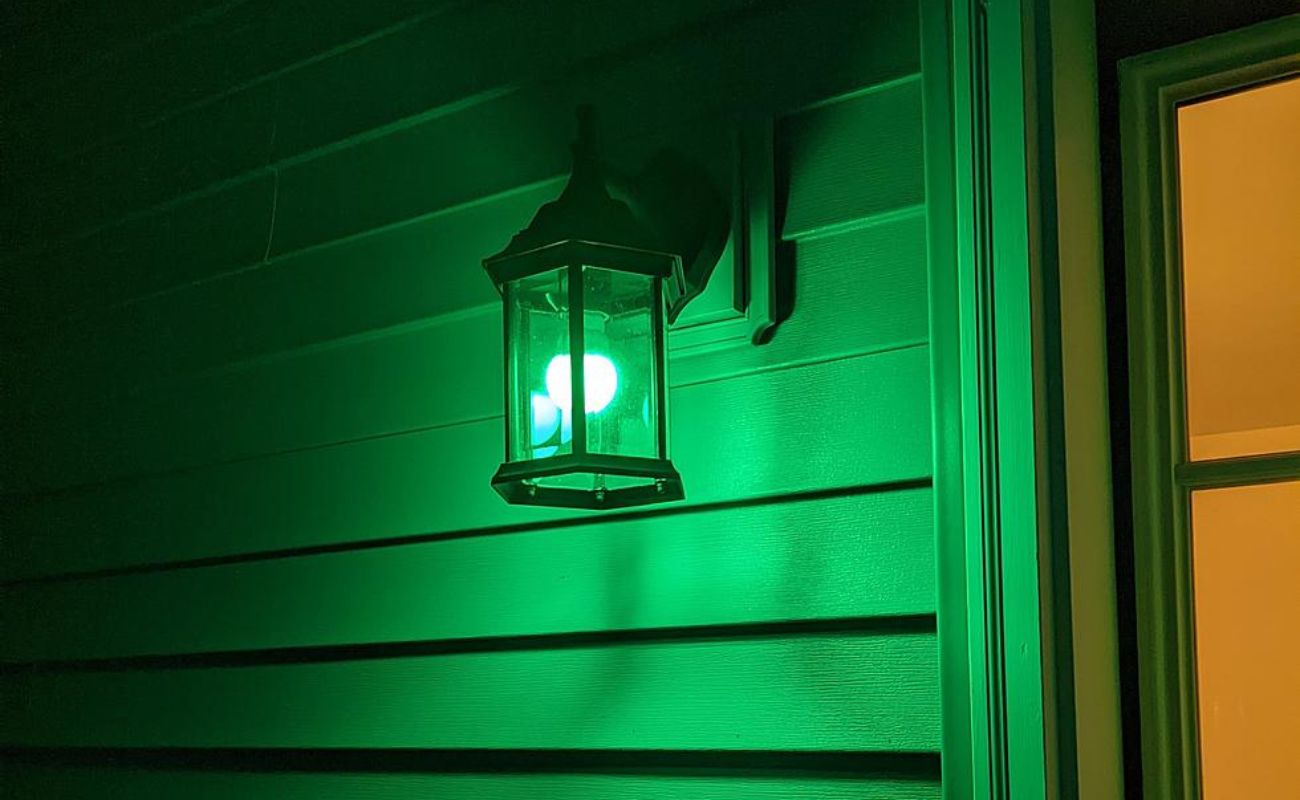

Articles
What Does A Pineapple On The Porch Mean
Modified: May 6, 2024
Discover the meaning behind a pineapple on the porch with our informative articles. Explore the symbolism and cultural significance of this tropical fruit.
(Many of the links in this article redirect to a specific reviewed product. Your purchase of these products through affiliate links helps to generate commission for Storables.com, at no extra cost. Learn more)
Introduction
Pineapples have long been a symbol of warmth, hospitality, and friendship. From their origins in the tropical regions of South America to their widespread popularity today, these sweet and tangy fruits have captured the imagination of people around the world. In particular, the tradition of placing a pineapple on the porch has held special significance for many cultures.
The history of pineapples dates back centuries, with evidence of their cultivation and consumption found in ancient civilizations. Native to South America, specifically Brazil and Paraguay, pineapples were valued not only for their delicious flavor but also for their medicinal properties. Early explorers, such as Christopher Columbus, marveled at the unique fruit and brought it back to Europe where it quickly gained popularity among royalty and the elite.
As the pineapple made its way across continents, it became an emblem of luxury and exoticism. Its distinct appearance, with a spiky exterior and vibrant yellow flesh, made it a prized commodity. In fact, in the 18th and 19th centuries, pineapples were so rare and expensive that they were often rented out for parties as a status symbol.
Beyond its physical attributes, the pineapple also became a symbol of hospitality and welcome. This association can be traced back to the era of European colonization in the Americas when sea captains would place a pineapple on their porch upon returning from a long voyage. This act signaled to neighbors and friends that they were welcome to visit and share in the captain’s abundance.
Over time, the tradition of placing a pineapple on the porch became more widespread, extending beyond seafaring communities. It became a way for homeowners to convey a message of hospitality and goodwill to their guests. A pineapple on the porch was a sign that visitors were welcome and would be treated warmly.
In addition to its symbolic meaning, the pineapple also held practical value. In warmer climates, the porch provided a cool and shady spot for the pineapple to ripen. The porch acted as a natural refrigerator, allowing the fruit to develop its distinct sweetness and aroma before being enjoyed by the household.
Today, the tradition of placing a pineapple on the porch continues to be cherished, although its significance may vary slightly across different cultures and regions. It has become a way to convey a sense of community, friendship, and openness. It serves as a reminder that we should always extend a warm welcome to those who enter our homes and lives.
In the following sections, we will explore the cultural significance of the pineapple on the porch in more detail, as well as modern interpretations and uses of this cherished symbol of hospitality.
Key Takeaways:
- The tradition of placing a pineapple on the porch symbolizes hospitality, warmth, and open-heartedness, serving as a timeless reminder to create inclusive and inviting spaces where people feel valued and appreciated.
- The pineapple on the porch has evolved into a versatile and creative expression of personal style, community unity, and social engagement, infusing surroundings with warmth, positivity, and a sense of welcome.
Read more: What Does Porch Mean
History of Pineapples
The history of pineapples is intertwined with the exploration and colonization of the Americas. Native to the tropical regions of South America, pineapples were first cultivated by indigenous people as early as 2000 BCE. The fruit’s popularity and cultivation spread throughout the Americas, with different varieties being cultivated in various regions.
When European explorers arrived in the Americas, they encountered pineapples for the first time and were captivated by their unique flavor and appearance. Christopher Columbus is believed to have brought the first pineapple back to Europe after one of his voyages to the Caribbean. The fruit quickly gained popularity among nobility and the elite, becoming a symbol of wealth and exoticism.
However, due to the challenges of long-distance transportation and cultivation, pineapples remained a rare and expensive commodity in Europe for centuries. They were often considered a luxury item and reserved for special occasions. In fact, in the 18th and 19th centuries, pineapples were highly sought after and sometimes rented out for extravagant events as a sign of opulence.
In the 18th century, European colonial powers, such as Spain and England, established pineapple plantations in their tropical colonies, such as the Caribbean and parts of Southeast Asia. These plantations allowed for more widespread cultivation and trade of pineapples, making them more accessible to a larger population.
During this time, pineapples also became a popular subject of art, architecture, and design. The image of a pineapple was often incorporated into decorative elements, such as furniture, textiles, and ceramics, to symbolize hospitality, richness, and welcome. This further solidified the pineapple’s association with warmth and friendship.
In the United States, the cultivation of pineapples began in the early 19th century in Hawaii. James Drummond Dole is credited with establishing the first commercial pineapple plantation on the island in 1901. Hawaii’s tropical climate and rich volcanic soil provided ideal conditions for pineapple cultivation, and the industry quickly thrived.
The development of modern transportation and preservation techniques in the 20th century further contributed to the popularity of pineapples worldwide. Canned pineapples became a staple ingredient in kitchens, allowing people to enjoy the fruit’s sweet and tangy flavor year-round.
Today, pineapples are cultivated in various countries around the world, with major producers including Costa Rica, the Philippines, Thailand, and Brazil. They are not only enjoyed fresh but also used in a wide range of culinary creations, from desserts to savory dishes.
The history of pineapples is a testament to the enduring appeal of this tropical fruit. From its humble origins in South America to its status as a symbol of hospitality and luxury, the pineapple has captured the hearts and palates of people across cultures and continents.
Symbolism of Pineapples
Pineapples have long been associated with numerous symbolic meanings, representing a variety of concepts across different cultures. The unique characteristics and cultural significance of the pineapple have made it a powerful symbol that extends beyond its delicious taste. Here are some of the key symbolism associated with pineapples:
1. Hospitality and Welcome: One of the most prevalent and widely recognized symbolic meanings of pineapples is hospitality. The pineapple’s history as a symbol of welcome dates back to the colonial era when sea captains would place a pineapple on their porch to signal that guests were welcome. The tradition has since evolved, but the symbolism remains strong. A pineapple is often used as a decorative element during gatherings, parties, and events to convey a warm and welcoming atmosphere.
2. Friendship and Gratitude: Pineapples are also commonly associated with friendship and gratitude. The fruit’s unique appearance, with its spiky exterior and sweet interior, is seen as an analogy for the complexities of friendship. Sharing a pineapple with others is seen as a gesture of appreciation and a way to strengthen bonds.
3. Abundance and Prosperity: Due to their historical rarity and high value, pineapples have become symbols of abundance and prosperity. In cultures such as Chinese and feng shui practices, the pineapple is often depicted in art and decor to attract good fortune and wealth. Its golden color and crown-like top symbolize success and abundance.
4. Warmth and Joy: The bright, vibrant color of a ripe pineapple evokes feelings of warmth and joy. Its sunny appearance and sweet fragrance uplift spirits and bring cheer to any setting. Pineapples are often used as motifs in interior design, clothing, and artwork to add a touch of positivity and happiness.
5. Hospitality Industry: Pineapples also hold significance in the hospitality industry. Many hotels, resorts, and restaurants incorporate pineapples into their logos, decor, and signage to project an image of welcome and excellent service. The pineapple serves as a recognizable symbol that indicates a commitment to exceptional hospitality.
6. Family and Homecoming: In some cultures, pineapples represent the warmth and joy of family gatherings and homecomings. The fruit’s use in celebrations and festive occasions symbolizes the strength of familial bonds and the importance of coming together to celebrate life’s milestones.
The symbolism of pineapples is diverse and multifaceted, reflecting the fruit’s rich history and cultural impact. Whether as a sign of hospitality, friendship, prosperity, or joy, the pineapple continues to hold a special place in our hearts and minds as a symbol of warmth, welcome, and abundance.
Pineapple on the Porch: Meaning and Origins
The tradition of placing a pineapple on the porch holds a special meaning that is deeply rooted in history and cultural significance. It is a symbol of hospitality, warmth, and open arms. But where did this tradition originate, and how did it become such a cherished symbol?
The practice of placing a pineapple on the porch can be traced back to the era of European colonization in the Americas. Sea captains, after long and perilous voyages, would return home with goods from distant lands, including exotic fruits like pineapples. Upon their arrival, they would display the pineapple on their porch as a sign to neighbors and friends that they were back and inviting them to share in their abundance.
In those times, where long-distance travel was arduous and communication methods were limited, the pineapple on the porch served as an unmistakable signal. It conveyed a message of hospitality and welcome, letting everyone know that visitors and well-wishers were invited to knock on the door and partake in the captain’s bounty.
This act became more than a mere display of wealth or a desire to flaunt rare fruits. It became a symbol of generosity, camaraderie, and human connection. The pineapple on the porch represented the captain’s willingness to share his good fortune, to offer a place of respite, and to extend a warm welcome to all who crossed his path.
Over time, the tradition of the pineapple on the porch expanded beyond seafaring communities and became a cherished symbol of hospitality for homeowners all over. Placing a pineapple on the porch was seen as a way to express a spirit of openness, friendliness, and goodwill to all who visited.
In addition to its symbolic meaning, the porch itself played a practical role in the ripening process of the pineapple. In warmer climates, the porch offered a cool and shaded spot for the fruit to ripen naturally. This allowed the pineapple to develop its full sweetness and aroma before being enjoyed by household members and guests alike.
Today, the tradition of placing a pineapple on the porch has evolved to encompass diverse interpretations and adaptations. Some people may use pineapple-themed decorations or even carve pineapples into their porch posts as a nod to this tradition. Others may place pineapple-themed welcome signs or doormats to convey the same message of hospitality and warmth.
While the specific customs and variations may differ from place to place, the underlying meaning remains consistent – the pineapple on the porch is a powerful symbol of welcome, friendship, and open-heartedness. It serves as a reminder to embrace the spirit of hospitality and to create spaces where people feel valued, appreciated, and accepted.
In the following sections, we will explore the cultural significance of the pineapple on the porch in different regions, as well as its modern interpretations and uses.
A pineapple on the porch is a symbol of hospitality and welcome. In many cultures, placing a pineapple outside your door signifies that all are welcome to visit and share in the warmth of your home.
Cultural Significance of Pineapple on the Porch
The tradition of placing a pineapple on the porch holds cultural significance in different regions around the world. While the practice originated in the Americas during the era of European colonization, it has since evolved and taken on unique meanings within various cultural contexts. Let’s explore some of these cultural significances:
1. American South: In the southern United States, particularly in states like Georgia and South Carolina, the pineapple on the porch holds deep cultural significance. It has become a symbol of Southern hospitality and graciousness. Placing a pineapple on the porch is a way to extend a warm welcome to friends, neighbors, and even strangers, embodying the values of openness and generosity that are highly regarded in Southern culture.
2. Caribbean: The pineapple holds importance in the Caribbean region, where it is considered a symbol of hospitality, friendship, and abundance. The practice of placing a pineapple on the porch is prevalent in many Caribbean islands, including Jamaica, Barbados, and the Bahamas. This tradition reflects the warm and welcoming spirit of the Caribbean people, who take pride in their hospitality and make visitors feel like part of the community.
3. Hawaii: In the Hawaiian culture, the pineapple on the porch represents a sense of aloha, which encompasses not just hospitality but also love, respect, and harmony. Hawaii is known for its lush pineapple plantations, and the pineapple has become a well-recognized symbol of the islands. Placing a pineapple on the porch not only signifies the spirit of welcoming guests but also reflects the love and care the Hawaiian people have for their community and the land.
4. Asian Cultures: In some Asian cultures, such as Chinese and Vietnamese, the pineapple is associated with good fortune and prosperity. Placing a pineapple on the porch is believed to bring luck and positive energy to the household. It is often done during festive occasions, such as Lunar New Year or weddings, to symbolize blessings and abundance.
5. European Influences: The tradition of placing a pineapple on the porch has also been influenced by European customs. In countries like England and Scotland, the pineapple has historically been associated with wealth and luxury. As a result, displaying a pineapple on the porch was seen as a sign of affluence and social status.
6. Global Symbol of Welcome: Beyond specific cultural contexts, the pineapple on the porch has come to embody a universal symbol of welcome and hospitality. In an increasingly interconnected world, the pineapple’s symbolism transcends borders, making it recognizable and understood across cultures. Whether in North America, Europe, Asia, or beyond, the pineapple on the porch serves as a signal to visitors that they are welcome and valued.
The cultural significance of the pineapple on the porch reflects the shared values of warmth, generosity, and community that exist within different societies. It reminds us of the importance of creating inclusive and inviting spaces where people from all walks of life can come together to share in the spirit of hospitality and friendship.
Read more: What Does A Flamingo On Porch Mean
Modern Interpretations and Uses of Pineapple on the Porch
While the tradition of placing a pineapple on the porch has historical roots, its modern interpretations and uses have evolved to encompass a broader range of meanings. Today, the pineapple on the porch is not only a symbol of hospitality but also a decorative element and a way to express personal style. Here are some modern interpretations and uses of the pineapple on the porch:
1. Decorative Element: Many homeowners incorporate pineapples into their porch decor to add a unique and eye-catching touch. They may use pineapple-themed doormats, porch signs, or even decorative sculptures to create a welcoming and visually appealing entrance. The pineapple motif has become a popular choice for outdoor furniture, throw pillows, and other accessories that can enhance the porch’s aesthetic.
2. DIY Projects: The pineapple on the porch has inspired various do-it-yourself (DIY) projects. Craft enthusiasts often create their own pineapple-themed decorations using materials like wood, fabric, or paint. These homemade creations can range from wreaths and door hangers to hanging planters or even string lights in the shape of pineapples. DIY projects provide a fun and creative way to incorporate personal style and make the porch truly unique.
3. Welcoming Symbol in Businesses: The pineapple on the porch is not limited to residential settings. Many businesses, particularly those in the hospitality industry, use the pineapple as a welcoming symbol. Hotels, bed and breakfasts, restaurants, and vacation rentals may display pineapple-themed signage or decor to communicate a sense of hospitality and excellent service to their guests. This visual cue sets the tone for a positive and welcoming experience.
4. Social Media Trend: The pineapple on the porch has gained popularity as a social media trend. Many people share photos and stories of their pineapple-themed porches on platforms like Instagram and Pinterest. This trend has influenced others to embrace the symbolism and incorporate pineapples into their own porch decor. The hashtag #pineappleonthePorch has become a way to connect with others who appreciate the tradition and share their own interpretation.
5. Community Engagement: The pineapple on the porch has also become a symbol of community engagement and unity. In some neighborhoods, community groups or local organizations may encourage residents to display pineapples on their porches as a sign of inclusivity and friendship. This promotes a sense of togetherness and fosters a welcoming environment for both residents and visitors alike.
6. Charity Events: The pineapple on the porch has been used as a symbol to raise awareness and support for various charitable causes. Fundraisers and charity events may adopt the pineapple symbol as a way to encourage donations and promote a spirit of giving. Whether through pineapple-themed merchandise or community initiatives, this tradition can serve as a platform for making a positive impact.
In modern times, the pineapple on the porch has become more than just a traditional symbol of hospitality. It has evolved into a versatile and creative expression of personal style, community unity, and social engagement. By embracing the pineapple on the porch, individuals can infuse their surroundings with warmth, positivity, and a sense of welcome.
Conclusion
The pineapple on the porch carries with it a rich history, cultural significance, and a timeless message of hospitality. From its origins as a symbol of abundance and luxury during European colonization to its modern interpretations and uses, the pineapple on the porch has become a cherished emblem of welcome and warmth.
Throughout different cultures and regions, the tradition of placing a pineapple on the porch has evolved, yet its core symbolism remains the same. It represents a desire to open one’s home and heart to others, creating a space where kindness, friendship, and connection can flourish. The pineapple on the porch is a visual cue that invites others to come together, share in moments of joy, and create lasting memories.
In addition to symbolizing hospitality, the pineapple has also emerged as a decorative element that adds charm and personality to the porch. Whether through DIY projects, unique porch decor, or social media trends, people express their own interpretations of the pineapple symbol, further enhancing its modern relevance.
The cultural significance of the pineapple on the porch spans continents and brings people together. From the American South to the Caribbean, from Hawaii to various Asian cultures, the pineapple symbolizes shared values of hospitality, generosity, and community. It serves as a reminder to extend kindness to others, embrace diversity, and celebrate the rich tapestry of human connections.
In today’s fast-paced and interconnected world, the pineapple on the porch holds even greater significance. It serves as a beacon of light, reminding us to disconnect from technology and reconnect with one another. It encourages us to create spaces where people can feel welcomed, accepted, and valued for who they are.
Whether you choose to display a pineapple on your porch, incorporate pineapple-themed decor, or simply embrace the symbolism of the pineapple in your interactions with others, the essence remains the same. The pineapple on the porch is a powerful symbol that carries with it the sentiment of hospitality, friendship, and a shared humanity.
As you celebrate the tradition of the pineapple on the porch, may it inspire you to create an environment where kindness and warmth flourish. Let it be a reminder that in a world that sometimes feels divided, the simple act of extending a genuine welcome can bridge gaps, forge connections, and make our communities stronger.
So, let us all embrace the pineapple on the porch as a symbol of open hearts, open minds, and open doors – a timeless reminder that the truest gesture of hospitality is to welcome others with open arms.
Curious about sprucing up your outdoor space? Our latest article on porch decor offers unique and stylish ideas set to dominate in 2024. From minimalist setups to vibrant accents, you'll find inspiration to transform your porch into a welcoming retreat for family and guests alike. Don't miss out on these creative and practical tips that will elevate your home's curb appeal and comfort.
Frequently Asked Questions about What Does A Pineapple On The Porch Mean
Was this page helpful?
At Storables.com, we guarantee accurate and reliable information. Our content, validated by Expert Board Contributors, is crafted following stringent Editorial Policies. We're committed to providing you with well-researched, expert-backed insights for all your informational needs.















0 thoughts on “What Does A Pineapple On The Porch Mean”